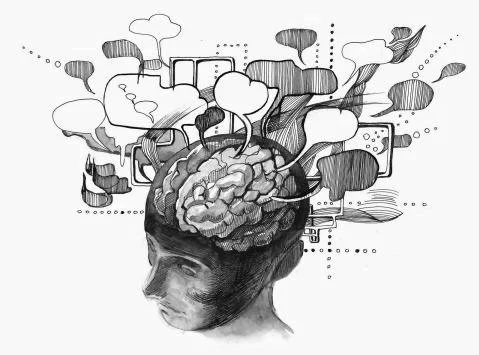Transforming Trauma, Painful Memories and Overwhelming Emotions
Are you feeling weighed down by past experiences, trapped in an endless loop of unresolved memories? Eye Movement Desensitization and Reprocessing (EMDR) offers a science-backed, transformative approach to help people process traumatic memories and find peace.
Recognized for its effectiveness in treating conditions like PTSD, anxiety, and depression, EMDR therapy is an empowering path to break free from emotional pain and reclaim a sense of self.
Here’s a closer look at how EMDR works, the neuroscience behind it, and why so many people in Toronto are turning to EMDR for deep healing.
What is EMDR Therapy?
EMDR (Eye Movement Desensitization and Reprocessing) is a structured therapeutic approach that uses eye movements or other forms of rhythmic bilateral stimulation (BLS) to help reprocess traumatic memories. This process enables the brain to “unfreeze” stuck memories, allowing individuals to process and integrate them healthily. EMDR is used by therapists worldwide to address not only PTSD but also anxiety, phobias, depression, and even obsessive-compulsive disorder (OCD).
How EMDR Works: The Neuroscience of EMDR
EMDR therapy is deeply grounded in the neuroscience of how the brain processes and stores memories, particularly traumatic ones. Here’s a closer look at how EMDR interacts with key brain structures to reprocess and heal traumatic experiences.
Adaptive Information Processing
Our brains are naturally equipped to process information and resolve experiences. How our brain does this is called the Adaptive Information Processing (AIP) model. This system integrates new information, particularly emotionally significant experiences, and stores them in a way that makes them accessible and manageable. The key players in this process include:
Amygdala: Often called the brain’s “alarm system,” the amygdala triggers emotional and fear responses to potential threats.
Hippocampus: Responsible for organizing and storing memories, the hippocampus contextualizes experiences, helping differentiate past from present.
Prefrontal Cortex: This part of the brain aids in decision-making, self-regulation, and rational thought, allowing us to interpret experiences logically.
When these brain areas work together, they effectively encode memories in a way that integrates them into our overall understanding of ourselves and the world.
However, in the face of overwhelming events—whether it’s trauma from an accident, a painful relationship, or early life struggles—our brains may struggle to process memories effectively. This is where EMDR’s power lies. EMDR leverages the brain’s Adaptive Information Processing (AIP) model, helping reframe traumatic memories so that they no longer feel like present-day threats.
Imagine a library where each book (or memory) is cataloged correctly. In a brain affected by trauma, some “books” are misfiled, lingering in the “current issues” section instead of the past. EMDR reorganizes these books, moving them to their rightful place, so past memories no longer trigger current distress.
When Adaptive Processing Breaks Down
In situations of extreme stress or trauma, the brain’s natural processing system can become overwhelmed. In these cases, the amygdala’s “fight-or-flight” response can take over, flooding the brain with stress hormones like cortisol and adrenaline. This response pulls energy away from the prefrontal cortex and hippocampus, which are critical for logical thinking and contextualizing experiences.
As a result, traumatic memories are stored in their raw, unprocessed form in the amygdala, rather than being integrated into long-term memory. The memory of the event remains vivid and highly emotional, causing individuals to relive the trauma repeatedly. In essence, these memories become “stuck,” as the brain is unable to reclassify them as past experiences. This phenomenon explains why a certain sight, sound, or situation can instantly trigger intense distress even years after the traumatic event.
How EMDR Works on These Parts of the Brain
EMDR therapy addresses these “stuck” memories by engaging the same brain regions involved in processing emotional responses and memory storage. Through bilateral stimulation—such as side-to-side eye movements—EMDR activates both hemispheres of the brain, which facilitates a more balanced connection between the amygdala, hippocampus, and prefrontal cortex.
Reducing Amygdala Activation: Bilateral stimulation during EMDR sessions calms the amygdala, quieting the brain’s emotional reaction and helping individuals feel less overwhelmed by the memory.
Re-engaging the Prefrontal Cortex: EMDR helps bring the prefrontal cortex back “online,” supporting more rational reflection on the traumatic experience.
Synchronization of Cortical Activity: EEG scans reveal that the eye movements in EMDR, similar to those during REM sleep, synchronize brain activity across the cortex at a delta frequency, akin to slow-wave sleep. This synchronization helps calm the overactive amygdala and aligns brain waves, allowing for the effective processing of traumatic memories.
Reprocessing Through the Hippocampus: EMDR’s stimulation helps the hippocampus reorganize the traumatic memory, moving it from an immediate “alarm” state to a stored, contextualized memory. This shift allows the brain to recognize the experience as something from the past that no longer poses a threat.
EMDR and REM Sleep
Interestingly, EMDR mirrors some of the brain’s processes during REM (Rapid Eye Movement) sleep. During REM sleep, the brain naturally consolidates and organizes memories, processing emotions and reinforcing new information. This phase of sleep is essential for managing stress and integrating experiences. Similarly, in EMDR therapy, the side-to-side eye movements used in bilateral stimulation resemble the rapid eye movements seen during REM. This effect appears to help the brain enter a state conducive to reprocessing trauma and reorganizing emotional memories.
Studies suggest that this mimicking of REM sleep during EMDR plays a critical role in its effectiveness, allowing the brain to perform “emotional housekeeping” that it could not complete at the time of the trauma. By using bilateral stimulation in a controlled, therapeutic environment, EMDR effectively re-initiates the brain’s natural capacity to process, contextualize, and file memories appropriately.
Through its connection to REM sleep and its targeted impact on essential brain regions, EMDR provides a unique and scientifically supported way to help individuals heal from trauma, transforming distressing memories into manageable experiences.
How EMDR Supports Different Conditions
EMDR FOR PTSD
PTSD, or post-traumatic stress disorder, is one of the most common reasons individuals seek EMDR therapy. Whether someone has experienced a single traumatic event or long-term trauma, EMDR helps process these experiences, significantly reducing symptoms like flashbacks, nightmares, and anxiety. A meta-analysis in Frontiers in Psychology found EMDR equally or more effective than other trauma-focused therapies, with many patients reporting lasting relief after only a few sessions.
EMDR for Anxiety, Panic, and Phobias
Anxiety disorders, including panic attacks and phobias, are often rooted in past experiences. EMDR therapy helps address the underlying memories and negative thought patterns that fuel anxiety. During treatment, the individual reprocesses these memories, allowing the brain to detach from the automatic “fight or flight” response that fuels anxiety and panic. Many find relief from long-standing anxiety by combining EMDR with other techniques like somatic therapy and breathwork.
EMDR for OCD
Obsessive-compulsive disorder (OCD) often involves intrusive thoughts that feel impossible to control. These thoughts are linked to deep-seated fears and anxieties, which can be processed through EMDR therapy. By targeting the memories that underlie compulsive behaviors, EMDR helps weaken the emotional charge associated with these intrusive thoughts, allowing individuals to regain control over their actions and mental well-being.
EMDR for Depression
For individuals dealing with depression, EMDR offers a path to address underlying memories or negative self-beliefs that may fuel depressive symptoms. In some cases, depression stems from traumatic events that, while seemingly unrelated, impact self-worth and emotional resilience. Studies suggest that addressing these memories through EMDR therapy can result in meaningful improvements in mood and energy levels, supporting a greater sense of self-worth.
The Lasting Impact of EMDR Therapy
For many people, EMDR is a journey that opens doors to self-compassion and resilience. As memories are processed, clients often feel a shift—not only in how they relate to the past but also in how they engage with the present and future. Toronto-based EMDR clients describe feeling “lighter,” “freer,” and more grounded in themselves, finding they can finally move forward without the emotional weight they once carried.
Looking for More?
If you’re interested in learning more about Mind-Body Therapy, we have lots of information to geek out on! You might enjoy:






